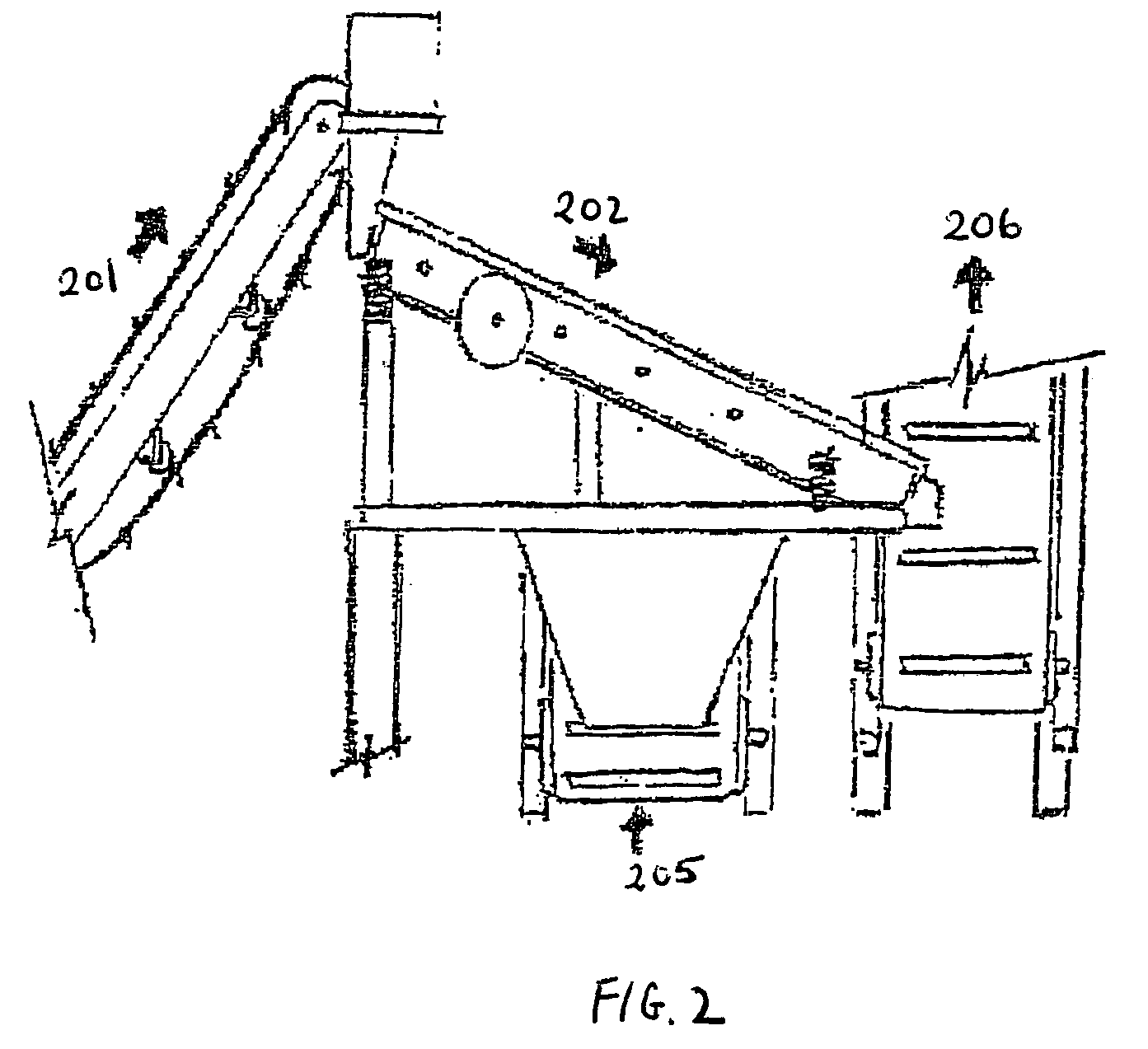Separation system for single stream compressed recyclables
a separation system and recyclable technology, applied in the direction of magnetic separation, gas current separation, membrane technology, etc., can solve the problem that no equipment or process has been available to process this trash for sufficient residuals
- Summary
- Abstract
- Description
- Claims
- Application Information
AI Technical Summary
Benefits of technology
Problems solved by technology
Method used
Image
Examples
Embodiment Construction
[0013]The sequence of operations is part of the novelty of the invention. As detailed in FIG. 1 the waste stream is segregated by size. The initial classification of the sub 4 inch material is for the less than 2.5 inch fraction to be separated by falling through the screen, FIG. 1, step (105), the beginning of the invented portion of the NSF Separation System. Since the “sub four inch material” is the first fallout of a disc-based operation the actual dimensions of the compressed material may vary from somewhat less than four inches to somewhat more than six inches. The initial screen size, herein set at 2.5 inches, may be somewhat smaller or larger depending on the characteristics of the particular machine producing the compressed waste. The larger fraction, Fraction 2, continues past the screen and returns to the beginning of the NSF system for further processing or, optionally, is discarded, FIG. 1, step (106–108). Historically it has been found that the material of value is pri...
PUM
 Login to View More
Login to View More Abstract
Description
Claims
Application Information
 Login to View More
Login to View More - R&D
- Intellectual Property
- Life Sciences
- Materials
- Tech Scout
- Unparalleled Data Quality
- Higher Quality Content
- 60% Fewer Hallucinations
Browse by: Latest US Patents, China's latest patents, Technical Efficacy Thesaurus, Application Domain, Technology Topic, Popular Technical Reports.
© 2025 PatSnap. All rights reserved.Legal|Privacy policy|Modern Slavery Act Transparency Statement|Sitemap|About US| Contact US: help@patsnap.com



